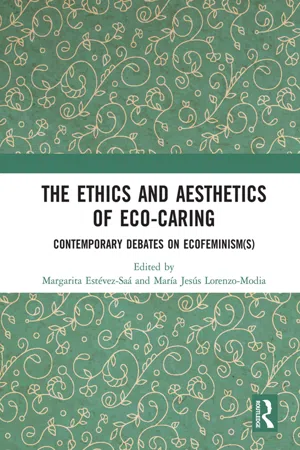The study of “ecology” deals with the relationships of organisms with their environment or home. I want to talk a little about the three homes we each have, our body, our culture, and our planet. Primarily I want to talk about how hard it is for us to live now, how difficult it is for us to be human now, caught as we are between an ancient human loyalty to nature and our planet, and our more immediate and necessary loyalties to Western culture.
I want to begin with a little story that illustrates something of our relationship with our three homes.
I was recently invited to give a poetry workshop to some school children in a wildlife park. The children and I went on a tour of all the animals in their big cages. We came to an enclosure full of cute little black monkeys, called Siamang Gibbons who normally live in Thailand, but are now almost extinct because the gibbons’ natural habitat is being destroyed for farmers to grow palm oil.
Standing there beside the caged monkeys, I wanted to know more about palm oil, so I looked up on my mobile phone all the things it is used for. Bread, cookies, biscuits, chocolate, pizza dough, noodles, ice-cream, and also shampoo, lipstick, soap, and washing powder. Then the children and I went back to the room where we were going to do our poetry workshop, and the children got out their lunchboxes, and in each one was bread, cookies, biscuits, and chocolate. The very things that are killing the gibbons. And this is how we live; our daily Western activities are destroying our own planet and its species.
We all are living in a triangle between endangered nature, Western culture, and selfhood. How can we stay emotionally well and “happy,” how can we thrive and flourish as individuals when we have to constantly live with the tragedies and ironies of our time?
I live in a permanent state of ecological concern. An anxiety not just for the survival of the wild creatures, but for the very survival of nature herself, and indeed of human beings. The British scientist Stephen Hawking has said that humanity has 100 years left on planet Earth before we ourselves face extinction. The main issues we face are climate change and overpopulation of humans, which may increase our chances of becoming more war-like as we run out of oil, water, and other resources. And the great extinction of species that is currently happening, which puts the whole planetary eco-system at risk. I am thinking here about the bees in particular, and the wasps—the threat of taking one creature out of the system, and the effects that may have on the whole.
But what happens to our minds, hearts, and bodies when we face these huge challenges? For myself, I have considered these problems for the last 30 years, and for the most part, I have felt depressed. When I examine my depression, I can see that it is made up of different emotions: disbelief all this is actually happening. And anger at the people I perceive are destroying the environment. Anger that easily becomes rage. But rage that only spills into powerlessness, hopelessness, and a terrible sense of sadness about what is happening to the planet. There’s also fear and panic and a never-ending feeling of concern.
But the real cause of all these dark feelings is that down beneath my depression is love—a deep, boundless love for the earth and all her dominions. And a boundless love of being alive.
To go on living and thriving and flourishing in this world, which is, after all, still a very beautiful place for many of us, I have needed a lot of different medicines. I have gone looking and listening and reading to discover what other human beings are saying, what advice others have for coping with the constant bad news of the environment. And curiously the main message that I have been given is that we as a species, as individuals, need to become more animal. Many environmentalists are saying that if we come into greater connection with our own wildness and animal nature, we will be in a better position to save our wild planet.
I want to talk about the challenge of trying to become more animal while living within Western culture. Because here in this territory between nature and culture and selfhood are the roots of ecopoetics. We could think of ecopoetics as simply a kind of poetry, a linguistic sanctuary that makes poems out of our current ecological crisis, or we could consider the “term” to mean your own ecopoetics, your own sanctuary that allows you to live poetically and meaningfully in these difficult times. A sanctuary that allows you to flourish and stay well, so that your own soul does not become extinct.
I want to open the conversation further with the poem “Amhlaoibh O’Súilleabháin Meets the Woman from Poll an Chapaill Bog.” The poem speaks to me about a sense of connection to the land beneath our feet, and to the creatures and plants we share the world with. Creatures that share the woman’s external world, and therefore also perhaps her internal space, her world of thoughts, imagination, and dreams, so that she lives within a kind of matrix of connection with nature.
This is a “found” poem, which means the words are not my own, I only found them and shaped them into a poem. The words were written down in 1828 when Humphrey O’Sullivan was walking in the country and got lost. The woman he asked his way from was crying because she was about to be evicted from her home.
Her story of eviction is very particular to Ireland, but during the 1800s and the Industrial Revolution, millions of people across Europe were forced to move to towns and cities, much as millions of people move to the slums in the developing world today.
